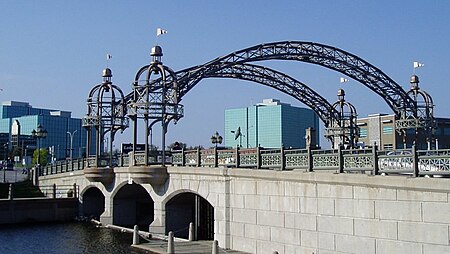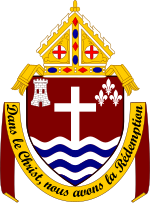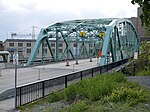Tour Eiffel Bridge
1990 establishments in QuebecBridges completed in 1990Bridges in GatineauCanadian bridge (structure) stubsQuebec building and structure stubs ... and 1 more
Quebec transport stubs

The Tour Eiffel Bridge, also known as the Montcalm Street Bridge is a small but ornate bridge in Gatineau, Quebec, Canada. There had long been a bridge across Brewery Creek, but by the 1980s it needed to be replaced. Hull and the National Capital Commission were working to turn the Brewery Creek area into a tourist and cultural district. It was decided to build an ornate structure. Incorporated in the bridge was an original steel girder from the Eiffel Tower, that had been part of a recently disassembled staircase. The girder was donated to Hull by Paris mayor Jacques Chirac. Architects Paul Martineau and Eric Haar modeled the bridge on Parisian style. It opened in 1990.
Excerpt from the Wikipedia article Tour Eiffel Bridge (License: CC BY-SA 3.0, Authors, Images).Tour Eiffel Bridge
Culture Trail, Gatineau Hull
Geographical coordinates (GPS) Address Nearby Places Show on map
Geographical coordinates (GPS)
| Latitude | Longitude |
|---|---|
| N 45.4295 ° | E -75.727 ° |
Address
Sentier culturel
Culture Trail
J8X 2L9 Gatineau, Hull
Quebec, Canada
Open on Google Maps








